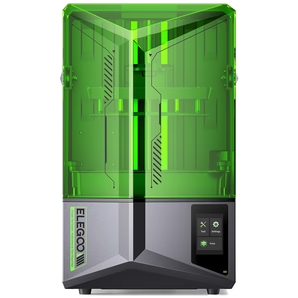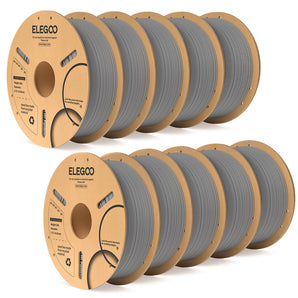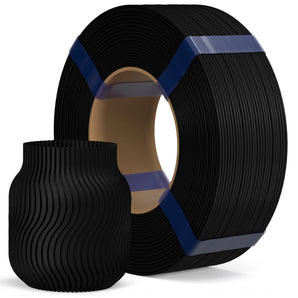3D Printing in Archaeology: Preserving and Replicating Ancient Artefacts
The field of archaeology has always been a fascinating blend of history and science, uncovering the secrets of the past. However, the integration of technology, particularly 3D printing, is revolutionizing the way we preserve and replicate ancient artifacts.
The ELEGOO X REVOPOINT 3D scanner, paired with the Saturn 3 Ultra printer, stands out as ideal for this purpose, offering high-resolution scanning capabilities for accurate digitization of artifacts and a large printing volume to create detailed, life-sized replicas.
This blog post explores the innovative applications of 3D printing in archaeology, from digitizing delicate relics to creating exact replicas for study and exhibition. It offers a glimpse into how this technology is not only conserving our rich heritage but also revolutionizing archaeological research and bringing history to life.
Archaeological Applications of 3D Printing
3D printing technology has found a unique and valuable place in archaeology. It allows for the accurate replication of artifacts, enabling archaeologists to handle and study priceless and delicate objects without the risk of damage.
This technology also facilitates public education and engagement by allowing museums and educational institutions to display and interact with exact replicas of ancient artifacts.
Ancient Artifact Preservation with 3D Printing
One of the most critical contributions of 3D printing in archaeology is in the preservation of ancient artifacts. By creating detailed replicas, archaeologists can preserve the physical form of artifacts that might otherwise degrade over time.
This method ensures that future generations can study and appreciate these historical treasures long after the original may have deteriorated.

Replicating Historical Relics
Replicating historical relics through 3D printing is not just about creating a physical copy; it's about capturing the essence of the past.
These replicas are used for educational purposes, allowing students and researchers to examine and understand historical artifacts closely. They also provide a means for experts to test theories about the use and creation of these objects without risking the original piece.
3D Scanning in Archaeology
3D scanning is a vital process in archaeological 3D printing. It involves digitizing an artifact to create a highly accurate digital model. This model can then be used for 3D printing, allowing for the creation of precise replicas.
Additionally, 3D scanning is a non-invasive technique, meaning it does not harm the original artifact, which is particularly important for fragile items.
Cultural Heritage Preservation
3D printing plays a significant role in cultural heritage preservation. It offers a way to safeguard important artifacts against environmental threats, war, and looting. By creating digital and physical replicas, 3D printing ensures that the knowledge and beauty of these artifacts are not lost to time or human conflict.
Exact Replicas for Archaeological Study
The creation of exact replicas for archaeological study is another remarkable advantage of 3D printing.
These replicas provide researchers with the opportunity to examine and experiment with artifacts in ways that would be impossible or too risky with the originals. This can lead to new insights and a deeper understanding of ancient cultures and technologies.
3D Printing in Historical Research
3D printing is transforming historical research by enabling a more interactive and detailed study of the past. It allows researchers to reconstruct broken or incomplete artifacts, providing a more comprehensive view of their original state.
This can lead to revelations about historical manufacturing techniques, usage, and the daily lives of ancient peoples.
Technology in Archaeology: A New Frontier
The incorporation of technology like 3D printing in archaeology represents a new frontier in the field. It bridges the gap between ancient artifacts and modern analysis techniques, offering innovative ways to study and preserve history. This technological advancement is reshaping our understanding of the past, making it more accessible and engaging.
Digitizing Delicate Artifacts
Digitizing delicate artifacts through 3D scanning and printing is crucial for their preservation. This process allows for the safe study and display of fragile items, reducing the physical handling that can lead to wear and tear. Digitization also provides an invaluable backup in case the original is lost or destroyed.
Innovations in Artifact Conservation
Innovations in artifact conservation through 3D printing are numerous. This technology not only helps in preserving the physical form of artifacts but also in restoring them.
Broken or eroded pieces can be replicated and reassembled digitally, offering a glimpse into their original appearance and function.
Archaeological 3D Modeling: Bringing the Past to Life
Archaeological 3D modeling, facilitated by 3D printing, brings the past to life in a tangible way. It allows for the reconstruction of ancient buildings, tools, and everyday objects, offering a vivid and relatable perspective on history. These models can be instrumental in both academic research and public exhibitions.
Advancements in Artifact Replication
The advancements in artifact replication through 3D printing are groundbreaking. They provide archaeologists and historians with tools to protect and study historical artifacts like never before. The accuracy and precision of these replicas offer a new level of detail in archaeological research and public education.
Conclusion
3D printing in archaeology is more than just a technological marvel; it's a gateway to a new era of historical preservation and study. By providing the means to replicate and preserve ancient artifacts accurately, 3D printing is ensuring that our cultural heritage remains alive and accessible.
This intersection of technology and history not only benefits the academic community but also enriches public understanding and appreciation of our past. As we continue to explore the potentials of 3D printing, we can look forward to more innovative ways of preserving and sharing our cultural treasures for generations to come.





























































































































































